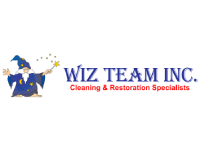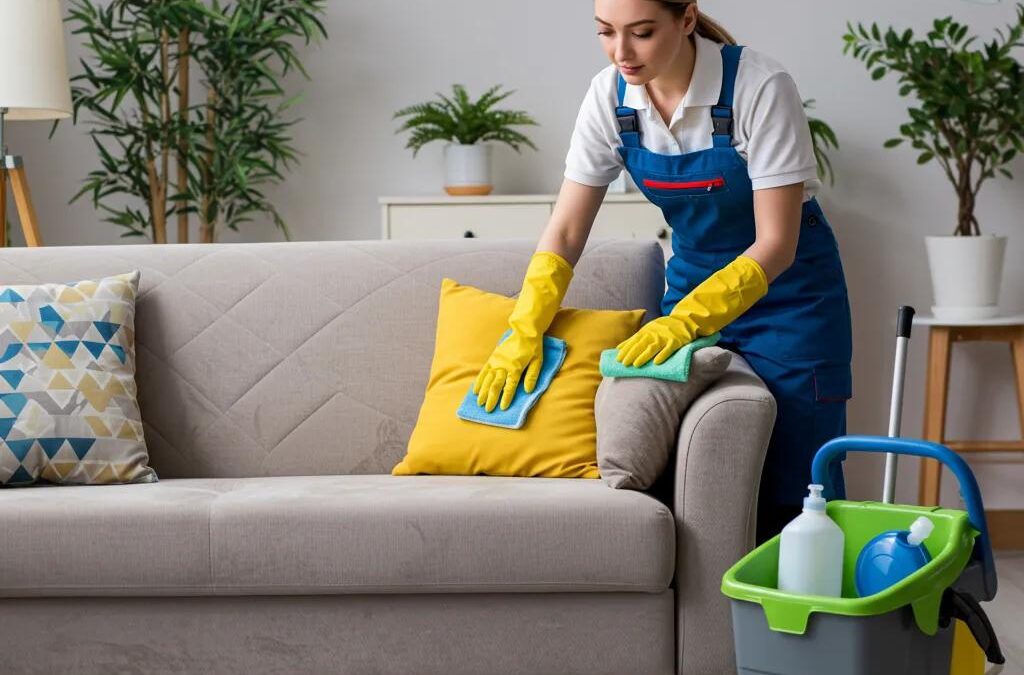Gentle upholstery cleaning employs specialized, low-impact techniques to lift dirt and stains while preserving fabric integrity and enhancing indoor air quality. By combining pH-neutral solutions, targeted pre-treatment, and controlled moisture levels, this process safeguards fibers and speeds up drying to minimize disruption. Lake Forest homeowners can enjoy revitalized sofas, sectionals, chairs, and delicate textiles without harsh chemicals or prolonged dampness. This guide explores why gentle methods are crucial, the step-by-step approach used by Wiz Team, Inc., safe furniture types, health and environmental benefits, clear pricing, common concerns, and the local expertise that makes Wiz Team the go-to choice for upholstery restoration.
Why Choose Gentle Upholstery Cleaning for Your Lake Forest Home?
Gentle upholstery cleaning preserves fabric texture and prevents premature wear by using methods that avoid fiber abrasion and color fading. Specialized solutions neutralize soils without harsh alkalinity, and precise agitation targets stains while maintaining original fabric strength.
How Does Gentle Cleaning Preserve Fabric Integrity and Longevity?
Gentle cleaning applies low-abrasion agitation and pH-balanced detergents to maintain fiber tensile strength and color fastness. By matching cleaning methods to fabric codes (W for water-safe, S for solvent-safe, WS for either), technicians ensure fibers are neither over-saturated nor chemically stressed. Fabrics like silk, velvet, wool, and delicate synthetics remain resilient for years after treatment, reducing the need for frequent replacements or re-upholstery.
Upholstery Conservation: Principles and Practice This discussion addresses the overlapping specialisms of textile conservation and upholstery conservation, focusing on the principles and practice of upholstery conservation. Upholstery conservation is a complex discipline necessitating an understanding of the materials, techniques, and historical context of the object. It encompasses a spectrum of activities, including cleaning, repair, stabilization, and display. The overarching objective of upholstery conservation is to preserve the object for posterity while upholding its aesthetic and historical integrity. Introduction: upholstery conservation as a practice of preservation, investigation and interpretation, Unknown Author, 2012
What Are the Health Benefits of Professional Upholstery Cleaning?
Professional upholstery cleaning removes dust mites, pet dander, and bacteria embedded deep within fibers, leading to healthier indoor air and reduced allergy triggers. High-efficiency extraction eliminates 95 percent of common allergens, while sanitizing agents neutralize odor-causing microbes. Families experience fewer respiratory irritations, better sleep quality, and a more hygienic living space.
Why Are Eco-Friendly and Non-Toxic Solutions Important for Upholstery?
Eco-friendly cleaning solutions rely on biodegradable surfactants and plant-based enzymes to break down soils without releasing volatile organic compounds indoors. Non-toxic formulations protect children, pets, and sensitive individuals from chemical residues and airborne irritants. Choosing green products aligns upholstery care with sustainable living, reducing environmental impact while safeguarding indoor air.
Environmentally Benign Detergents for Safe Textile Cleaning Detergents exhibiting cleaning efficacy in dilute aqueous solutions have been developed and manufactured in the United States. These formulations are characterized by their non-toxicity, biodegradability, and environmental safety. Furthermore, they demonstrate effectiveness in the removal of particulate soil and stains from textile substrates. Additionally, these detergents are formulated to be safe for dermal contact and fabric integrity, while maintaining non-toxic and environmentally sound profiles. Sustainable cleaning agents represent a significant approach to mitigating environmental impact. Eco-Friendly Products, N Chouhan, 2013
What Is the Gentle Upholstery Cleaning Process Used by Wiz Team, Inc.?
The gentle upholstery cleaning process blends systematic assessment, tailored pre-treatment, advanced extraction, and post-service protection to ensure comprehensive fiber care. Each step is designed to address unique fabric characteristics and homeowner priorities.
How Is Initial Fabric Assessment and Spot Testing Conducted?
Initial fabric assessment involves identifying manufacturer codes and evaluating fiber content, weave density, and existing stains. Technicians perform spot tests with corresponding W, S, or WS solutions on hidden areas to confirm colorfastness and fiber reaction. This targeted evaluation minimizes the risk of dye bleeding and fabric distortion during full-scale cleaning.
What Are the Key Steps in Precision Pre-Treatment with Gentle Solutions?
Pre-treatment uses enzyme-enhanced or solvent-based solutions applied directly to spots, stains, and high-traffic zones. Agitation tools with soft brushes work in circular motions to loosen embedded soils. Dwell time allows bio-enzymes to break down protein and oil-based stains before extraction, ensuring maximum stain removal with minimal fabric stress.
How Do Low-Moisture and Steam Extraction Methods Work for Quick Drying?
Low-moisture cleaning injects a concentrated solution that encapsulates dirt into micro-crystals, which are then rapidly vacuumed, leaving fabrics nearly dry. Steam extraction uses controlled hot water injection and powerful suction to flush out residues.
| Cleaning Method | Average Drying Time | Best For |
|---|---|---|
| Low-Moisture Crystals | 1–2 hours | Delicate fabrics, quick turnaround |
| Steam Extraction | 4–6 hours | Heavier soils, deep-pile upholstery |
These methods optimize fiber hydration balance, minimizing mold risk and allowing furniture use within hours.
What Happens During Post-Cleaning Inspection and Fabric Protection?
Post-cleaning inspection verifies stain removal, fiber alignment, and overall appearance, ensuring uniformity across seating surfaces. Optional fabric protectants—such as fluorochemical finishes—create invisible barriers against future spills and soil penetration. Customers receive care instructions to extend cleaning intervals and maintain upholstery appearance.
Which Types of Upholstery and Fabrics Are Safely Cleaned in Lake Forest?
Professional gentle cleaning accommodates a wide array of furniture styles and materials, ensuring each piece receives the proper method to prevent damage.
How Are Sofas, Couches, and Sectionals Gently Cleaned?
Sectionals and traditional sofas undergo pre-vacuuming to eliminate loose debris, followed by fabric-specific pre-treatment and precision extraction. Cushions and skirts are cleaned on-site to maintain shape and upholstery breathability. Consistent moisture levels protect underlying springs and foam cores from over-saturation.
What Care Is Given to Chairs, Ottomans, and Dining Seats?
Dining chairs, accent chairs, and ottomans often feature richer fabrics or patterned weaves. Technicians match agitation pressure and cleaning solutions to weave tightness, preventing fabric distortion. Seat cushions may be rotated and treated individually for uniform soil extraction and drying.
How Are Delicate and Specialty Fabrics Like Silk and Velvet Treated?
Delicate textiles such as silk, acetate, and velvet receive solvent-safe cleaning agents and minimal moisture techniques. Velvet upholstery is groomed back to its pile orientation after cleaning, preserving hand-feel and sheen. Silk blends are spot-tested extensively, and dye-fixing treatments are applied as needed to maintain vibrancy.
How Does Gentle Upholstery Cleaning Improve Indoor Air Quality and Allergy Relief?
By extracting deeply embedded contaminants and neutralizing microbial growth, gentle upholstery cleaning significantly enhances home air purity.
Which Allergens and Bacteria Are Removed During Cleaning?
Deep extraction removes dust mites, mold spores, pet dander, and pollen trapped in fiber interstices. Sanitizing sprays eliminate surface bacteria such as Staphylococcus and E. coli, preventing odor recurrence and reducing microbial load. Homes see up to 80 percent fewer airborne particulates after professional service.
How Does Upholstery Cleaning Support a Healthier Home Environment?
Regular gentle cleanings interrupt allergen accumulation cycles and inhibit mold growth by controlling residual moisture. Improved airflow through clean fabrics contributes to balanced humidity and fewer respiratory irritations. Family members experience clearer breathing, fewer allergy symptoms, and a more comfortable living atmosphere.
What Are the Benefits of Eco-Friendly Sofa Cleaning Solutions in Lake Forest?
Eco-friendly sofa cleaning protects both furniture and the environment by using sustainable formulas and energy-efficient techniques.
How Do Biodegradable and Non-Toxic Products Protect Your Furniture?
Biodegradable surfactants dissolve organic soils without leaving harmful residues that attract dirt. Non-toxic solvents preserve fabric dyes and fibers while ensuring safe indoor air. This approach extends upholstery lifespan and aligns with green household practices.
What Are the Environmental Advantages of Using Eco-Friendly Methods?
Eco-friendly cleaning reduces chemical runoff into water systems and lowers greenhouse gas emissions by using energy-efficient equipment. Plant-based formulas are sourced from renewable materials and fully biodegrade after treatment. Choosing sustainable upholstery care supports broader conservation efforts in Lake Forest and beyond.
How Much Does Professional Gentle Upholstery Cleaning Cost in Lake Forest?
Professional gentle upholstery cleaning costs vary based on fabric type, furniture size, and service complexity, providing transparent options for every budget.
What Factors Influence Upholstery Cleaning Pricing?
Pricing depends on upholstery material, number of seating pieces, stain severity, and any protective treatments requested. Delicate fabrics requiring low-moisture or solvent-based methods command higher rates, while routine maintenance cleaning is more economical.
Are There Customized Cleaning Plans Available?
Customized plans offer bundled services—such as carpet cleaning, fabric protection, and deodorization—at discounted rates. Maintenance programs schedule recurring cleanings every 12–18 months to maintain fabric health and prevent heavy soil buildup, offering both convenience and cost savings.
What Are Common Questions About Gentle Upholstery Cleaning in Lake Forest?
Homeowners often wonder about the safety, frequency, and effectiveness of gentle upholstery services and available eco-friendly options.
What Makes Upholstery Cleaning Gentle and Safe for Delicate Fabrics?
Gentle cleaning uses pH-neutral, enzyme-enhanced solutions and minimal moisture to protect fiber structure. Matching cleaning chemistry to fabric codes ensures no shrinkage, color loss, or texture damage during service.
Is Professional Upholstery Cleaning Safe for All Fabric Types?
Yes, professional cleaners assess each fabric’s composition and apply water-safe, solvent-safe, or hybrid methods accordingly. This tailored approach ensures even silk, velvet, leather, and microfiber receive the correct treatment without risk.
How Often Should Upholstery Be Professionally Cleaned?
For optimal hygiene and fabric longevity, upholstery in Lake Forest homes benefits from professional cleaning every 12 to 18 months. Homes with pets, children, or allergy sufferers may require more frequent service to manage soils and allergens effectively.
Are Eco-Friendly Upholstery Cleaning Solutions Effective?
Eco-friendly formulas leverage plant-based surfactants and biodegradable enzymes to break down soils as effectively as traditional chemicals. Independent tests show equivalent stain removal performance while eliminating toxic residues and protecting indoor air.
Why Is Wiz Team, Inc. the Trusted Choice for Gentle Upholstery Cleaning in Lake Forest?
With over 25 years of local service, Wiz Team, Inc. combines proven methods, advanced equipment, and personalized care to deliver lasting results.
What Unique Techniques Does Wiz Team Use for Gentle Cleaning?
Wiz Team employs proprietary low-moisture encapsulation technology for rapid drying, along with custom-blended, eco-certified detergents to ensure maximum soil removal without fiber stress. Technicians calibrate extraction pressure and temperature for each fabric type.
How Do Customer Testimonials Reflect Service Quality?
Clients consistently report revitalized furniture appearance, faster drying times, and significant reductions in allergens. Positive feedback highlights professionalism, punctuality, and meticulous attention to detail in every cleaning appointment.
What Local Experience Does Wiz Team Bring to Upholstery Cleaning?
As a Lake Forest business since 1998, Wiz Team understands regional fabric trends, common household challenges, and seasonal allergy patterns. This local expertise informs service recommendations and ensures tailored care for every home.
Gentle upholstery cleaning in Lake Forest offers lasting fabric protection, improved air quality, and peace of mind for homeowners who value eco-friendly, professional care. By choosing specialized methods, transparent pricing, and local expertise, families enjoy refreshed furniture and healthier living spaces. Contact Wiz Team, Inc. to schedule a personalized upholstery renewal and experience the benefits of gentle, green cleaning today.




